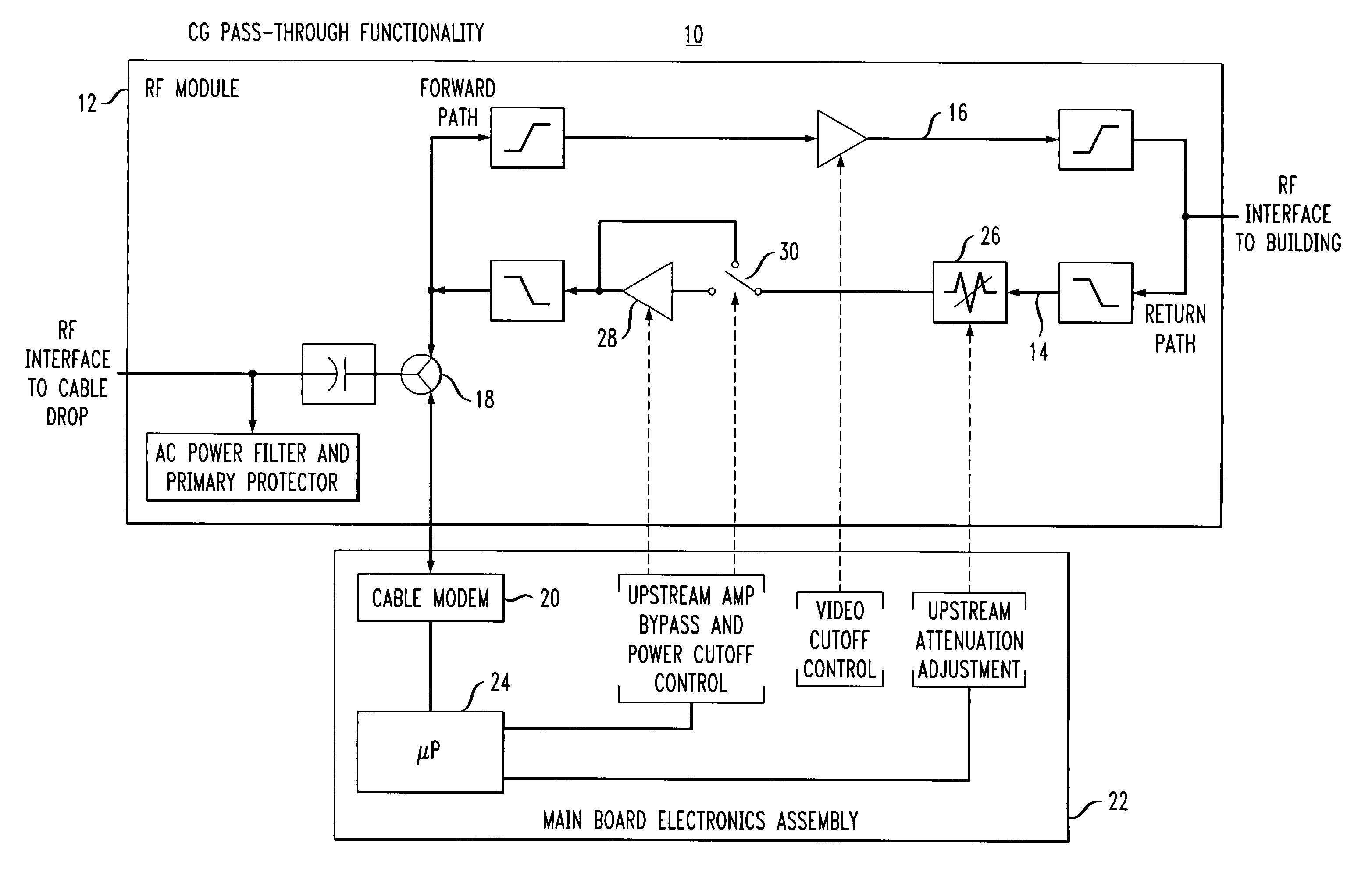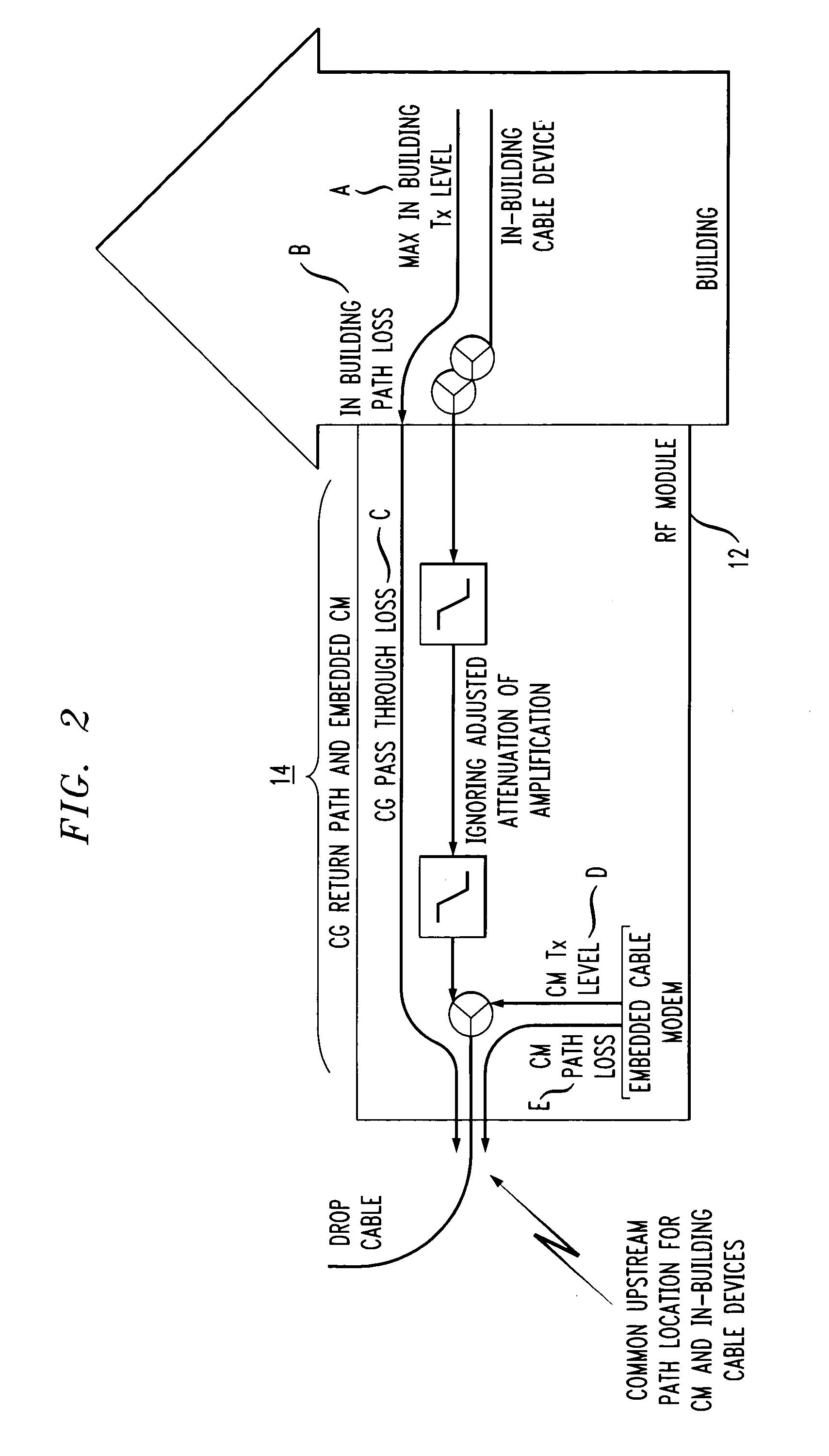Dynamic upstream attenuation for ingress noise reduction
- Summary
- Abstract
- Description
- Claims
- Application Information
AI Technical Summary
Benefits of technology
Problems solved by technology
Method used
Image
Examples
example
[0031]The following example is useful in understanding the application of the ingress noise reduction technique of the present invention. In particular, consider the following configured parameters for USLossCalc:[0032]MaxInBuildingTxLevel=58 dBmV for the maximum DOCSIS 1.1 transmit level for QPSK modulation. This could be associated with an individual cable modem, a video set-top-box, or telephony Media Terminal Adapter (MTA) with embedded CM. Alternatively, the value could be smaller, associated with a narrowband video return path for a set-top-box that does not utilize an embedded CM. The choice of cable device associated with MaxInBuildingTxLevel will influence the choice of InBuildingTxBW, as shown below.[0033]InBuildingPathLoss=8 dB for two cable splitters in the home[0034]CGPassthroughLoss=5 dB for a single splitter and dual duplex filter losses between the CG's RF interface at the building and cable drop[0035]CMPathLoss=4 dB for a single splitter between the CG's CM interfac...
PUM
 Login to View More
Login to View More Abstract
Description
Claims
Application Information
 Login to View More
Login to View More - R&D
- Intellectual Property
- Life Sciences
- Materials
- Tech Scout
- Unparalleled Data Quality
- Higher Quality Content
- 60% Fewer Hallucinations
Browse by: Latest US Patents, China's latest patents, Technical Efficacy Thesaurus, Application Domain, Technology Topic, Popular Technical Reports.
© 2025 PatSnap. All rights reserved.Legal|Privacy policy|Modern Slavery Act Transparency Statement|Sitemap|About US| Contact US: help@patsnap.com



